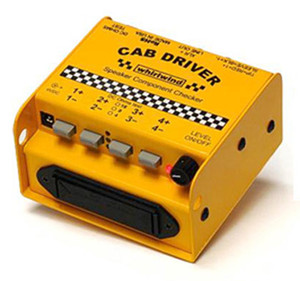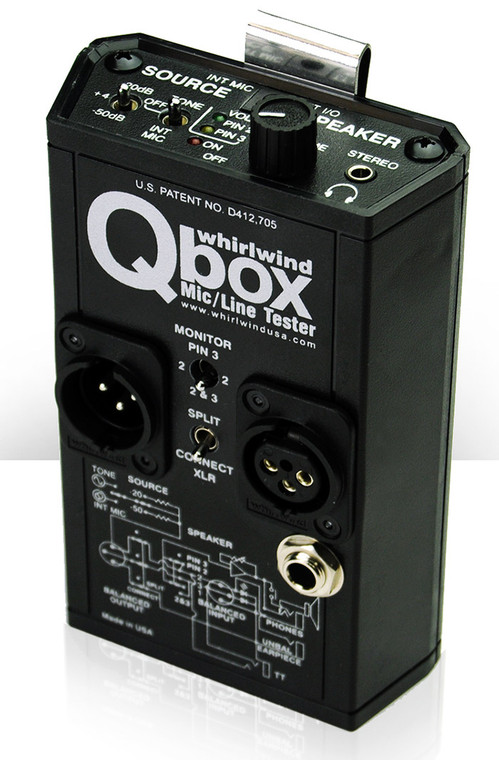
Whirlwind Qbox
Below are the available bulk discount rates for each individual item when you purchase a certain amount
- Buy 2 - 4 and get 5% off
- Buy 5 or above and get 10% off
The Whirlwind QBOX
"Should be in every sound tech's toolbox!"
The Qbox, introduced by Whirlwind in 1997, is a versatile audio line tester that has become one of their most successful "Black Boxes". It is ideal for various applications including live sound, maintenance, and installations where audio runs through cables.
The Qbox features a microphone, speaker, test tone generator, outputs for standard headphones, and a 1/4" jack for line-in or a 2k Ohm (telephone) earpiece out. It is equipped with a handy clip that allows you to attach it to your belt or equipment rack.
With the Qbox, you can instantly test audio at any point in your system, from the mics to the power amps, and quickly determine which sections are working and which are not. You can also quickly check dynamic mics and cables without having to turn on the entire system. The built-in mic or tone generator at three different levels helps you activate a signal path or identify a specific cable in a pile of cable ends. The Qbox is powered by a single standard 9V alkaline battery and housed in rugged ABS, making it light yet durable enough to withstand the wear and tear of fieldwork.
For hands-free intercoms, simply plug in headphones and connect one Qbox on each end of a line, and use the built-in microphone. The Qbox can also monitor a standard 3-wire intercom feed and confirm the presence of intercom or phantom power through its LEDs. Additionally, it can serve as a squawk box from the main audio console during set-up, or as a portable, powered monitor.
The Qbox's SOURCE section lets you send a tone or the signal from the built-in condenser mic at mic or line levels, while the SPEAKER volume control allows you to confirm incoming signals at mic or line level. The handy MONITOR switch allows you to listen to a balanced signal or two separate unbalanced signals on pin 2 or 3 (referenced to pin 1), such as a two-channel intercom. A SPLIT switch disconnects the two XLRs from each other, so you can send tone or internal mic out of one XLR and listen to what's coming back on the other. You can also connect the XLRs together and "loop-through" or daisy-chain units.
Some great extra features:
1. The Qbox offers a cost-effective and convenient solution for a party-line intercom. It features an internal omni-directional microphone for simple communication and can also be paired with another Qbox and headphones for a DIY intercom setup. To prevent feedback, headphones must be used at both ends. Alternatively, the headphone output can be connected to a mixer for solo listening while still allowing normal headphone use.
2. The Qbox is a versatile tool for live sound technicians, serving as an IFB amplifier in disguise. Simply send a line level signal to the Qbox, plug in a high-impedance IFB earpiece, and you're ready to provide an IFB feed. The front panel has a 1/4" TS jack for easy connectivity. The belt clip allows for easy attachment to the talent or a chair, and the device can be powered by a 9V 100mA battery eliminator for added versatility.
3. The Qbox features a versatile TT jack at the top, labeled with [INT MIC] on one side and [TT I/O] on the other. It is connected in parallel with the output XLR and can be used to monitor external signals, send tone or internal microphone signals to other equipment. This comes in handy in broadcast trucks or wherever TT patch bays are present. The XLR split switch must be in the connected position to utilize this feature.



